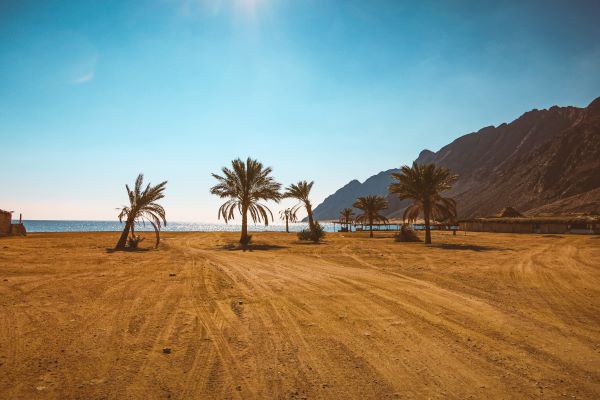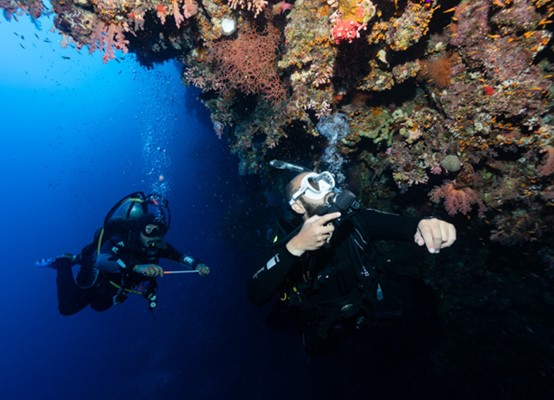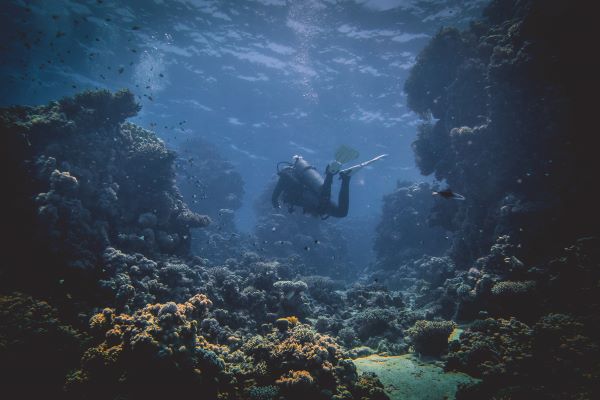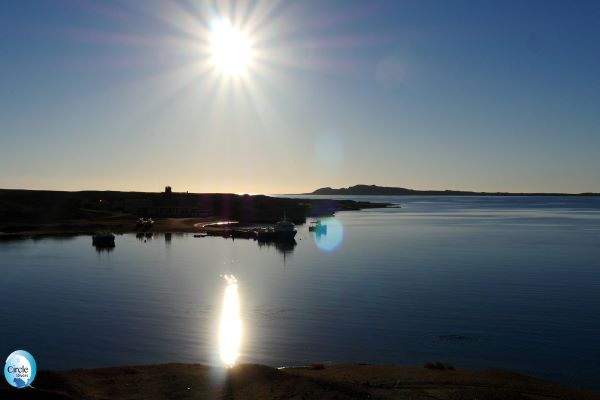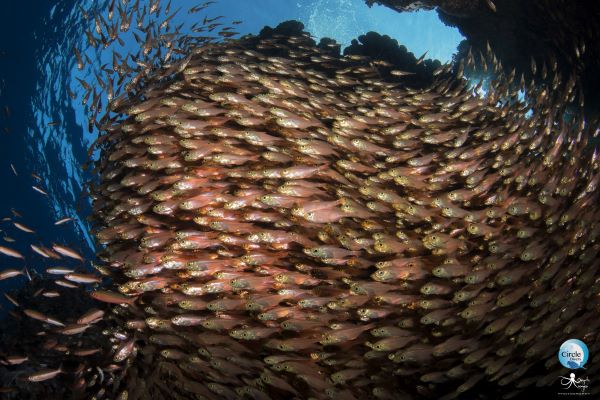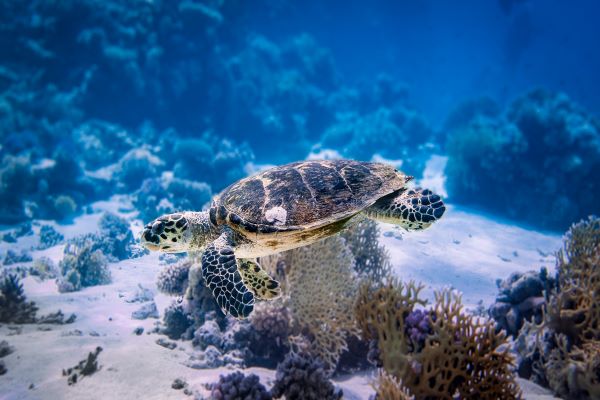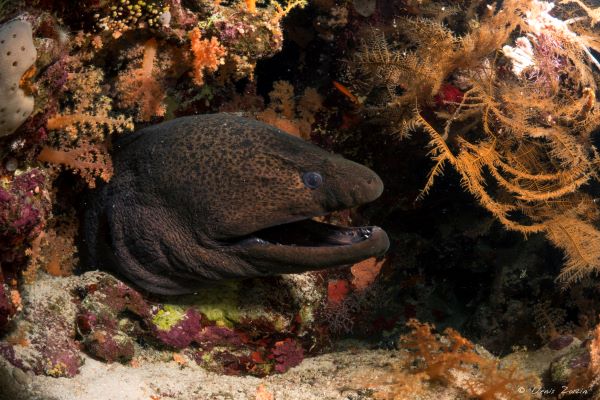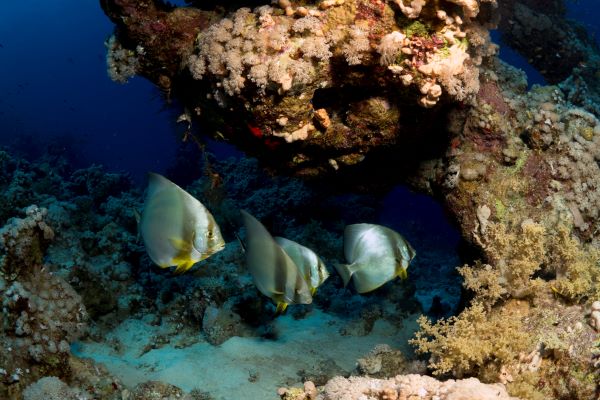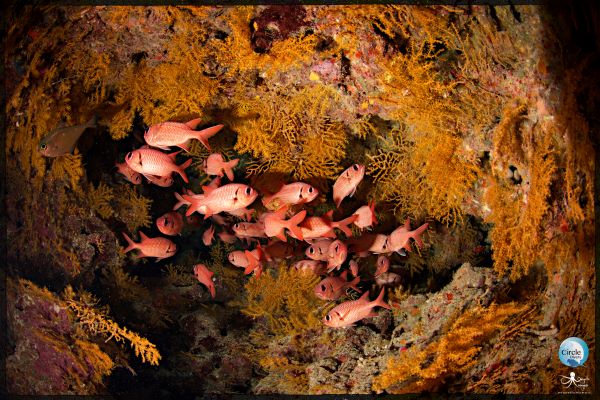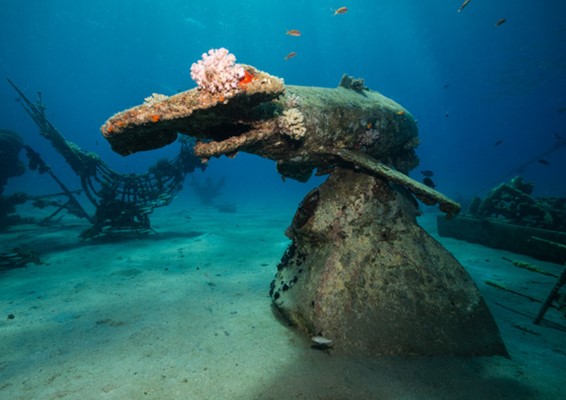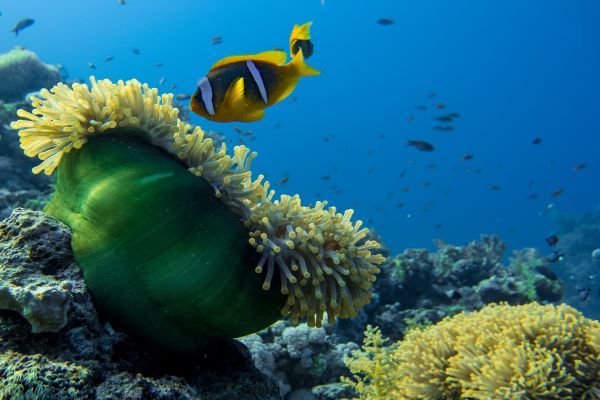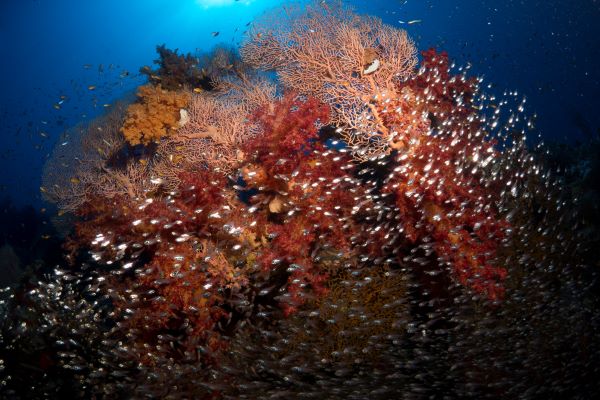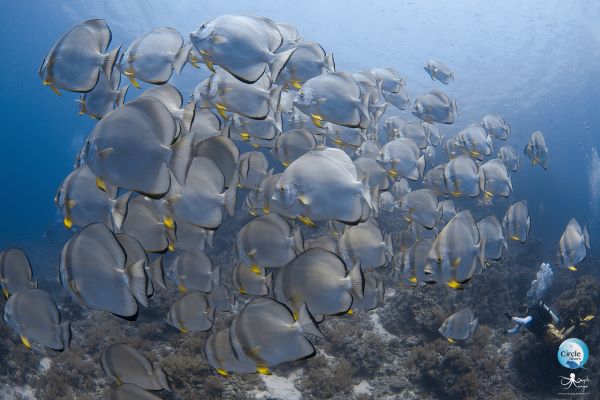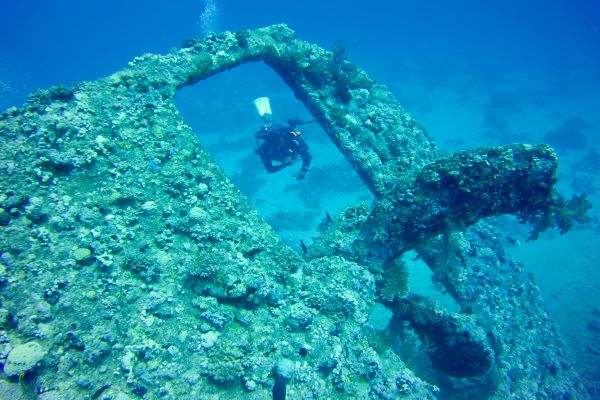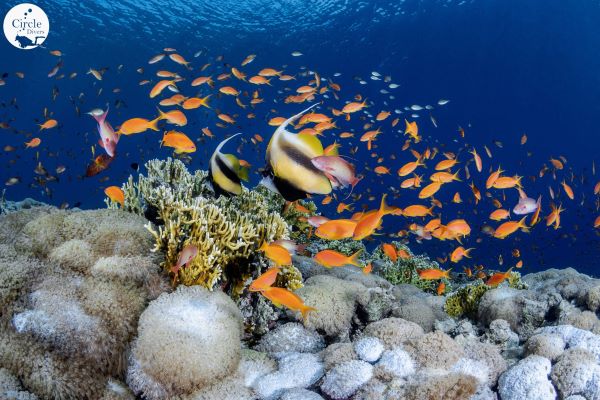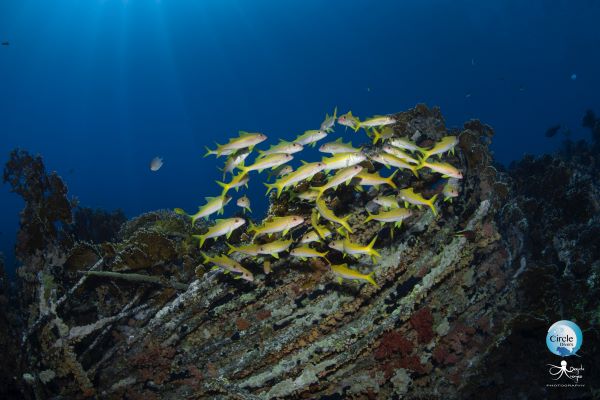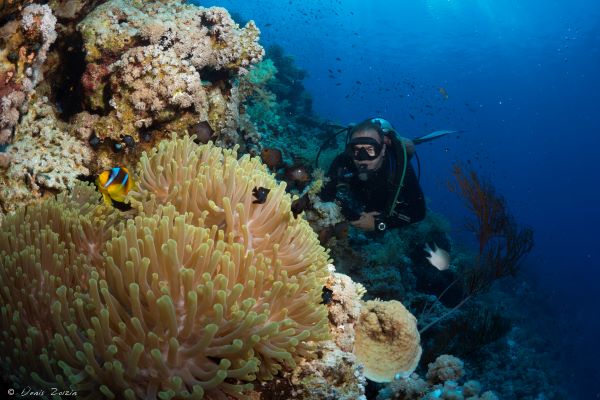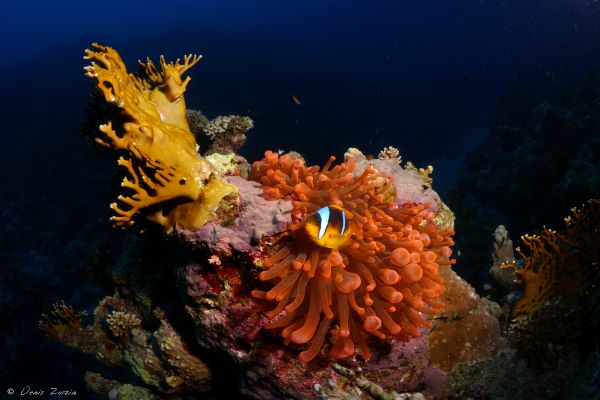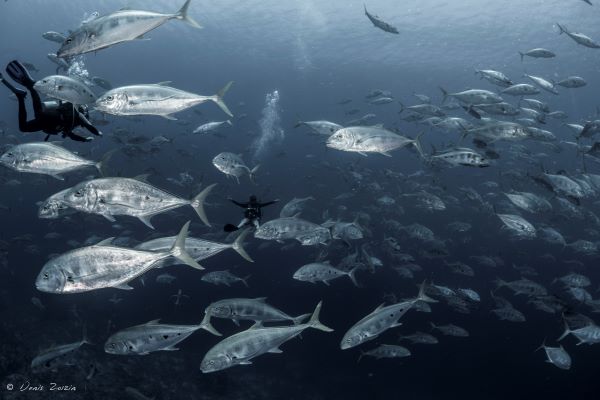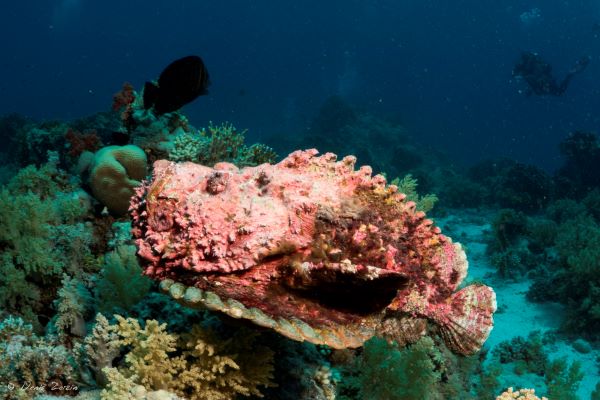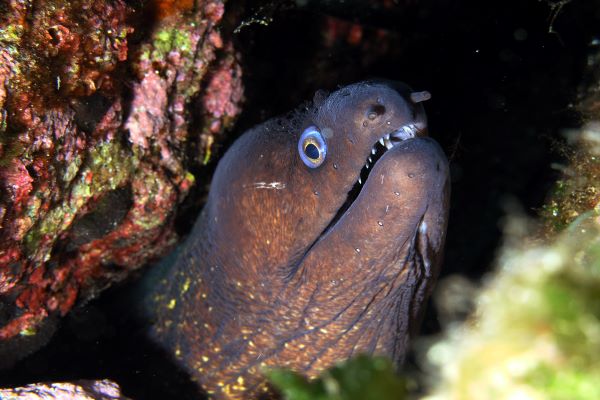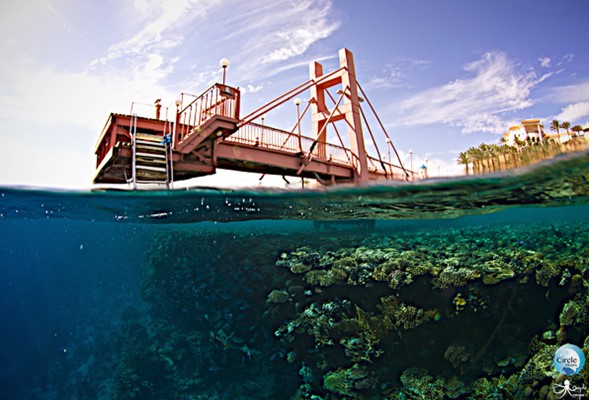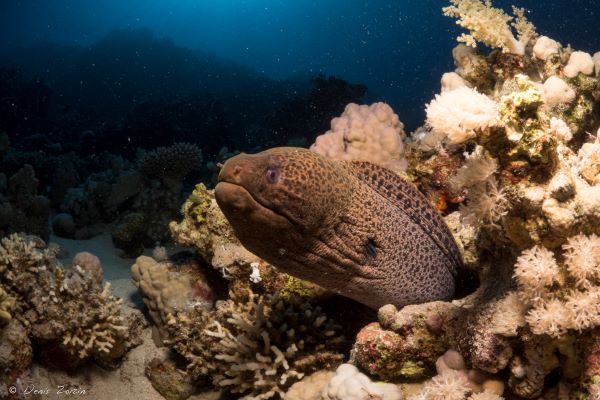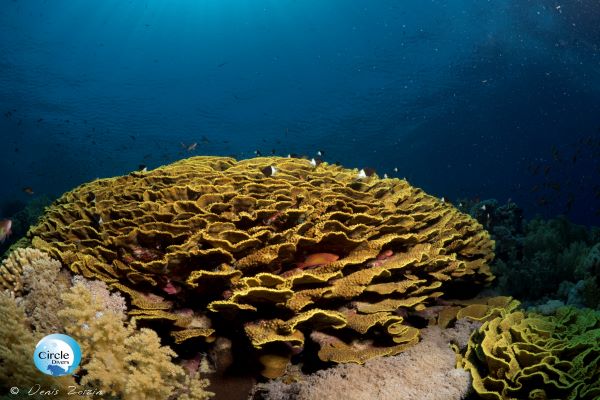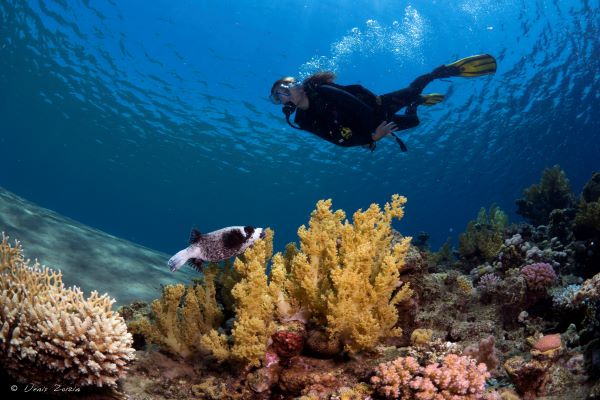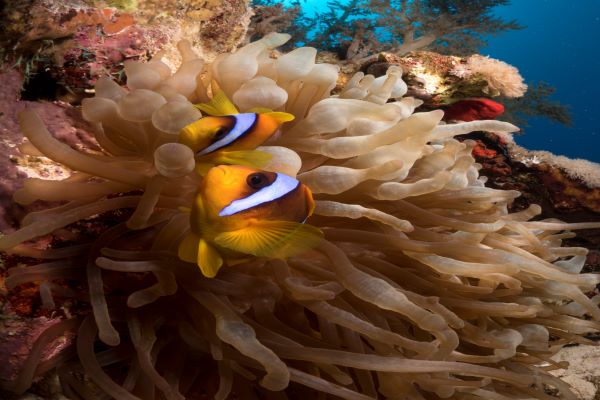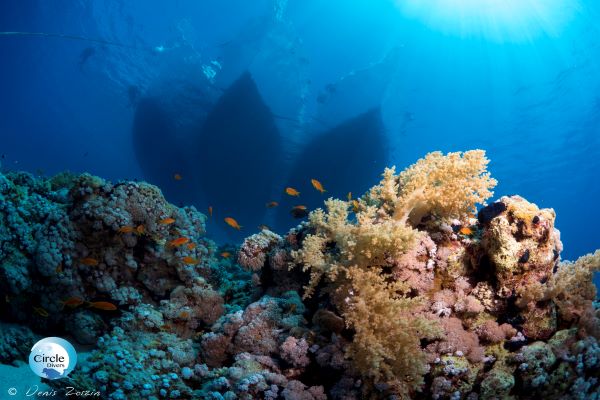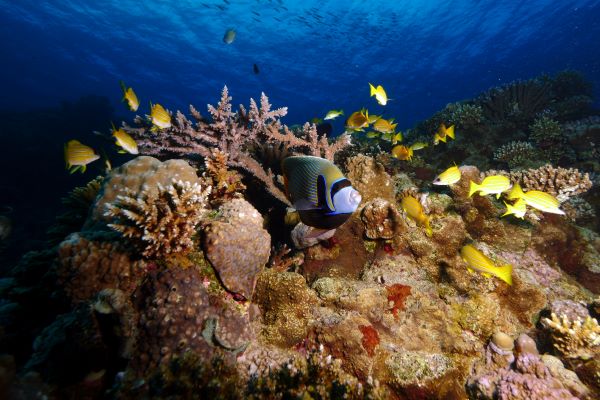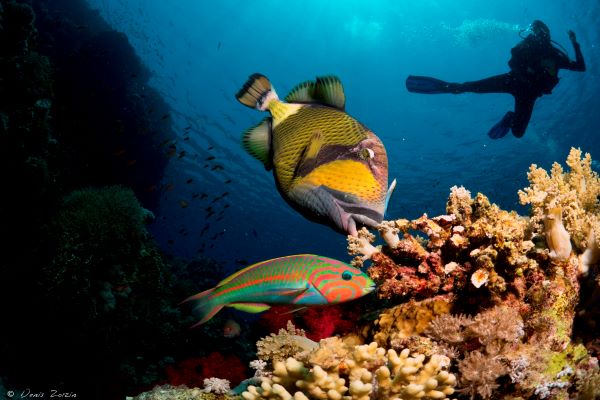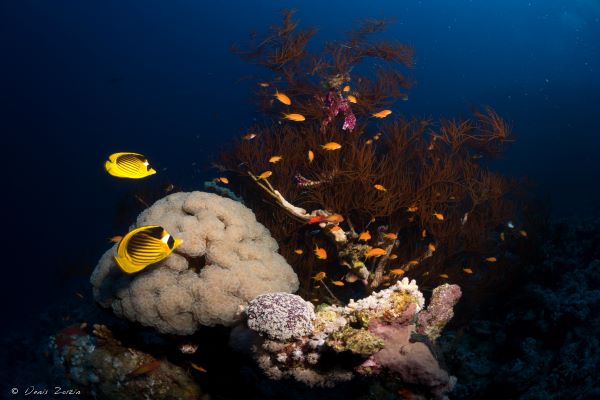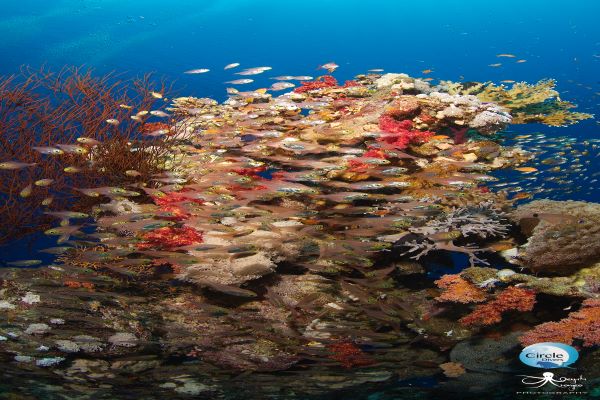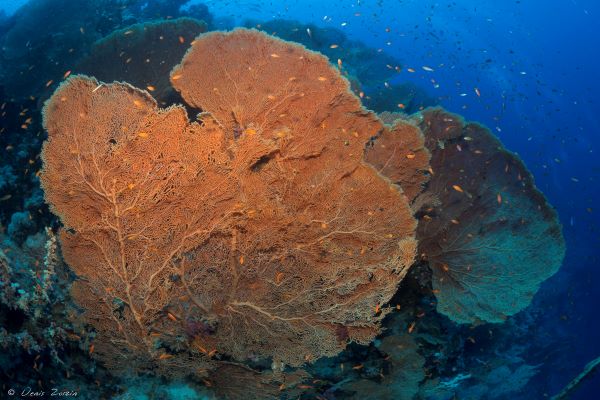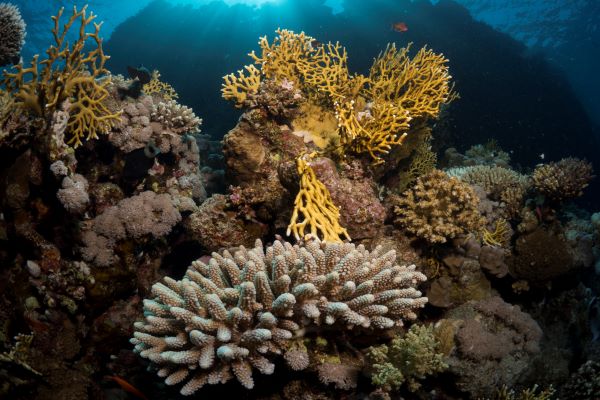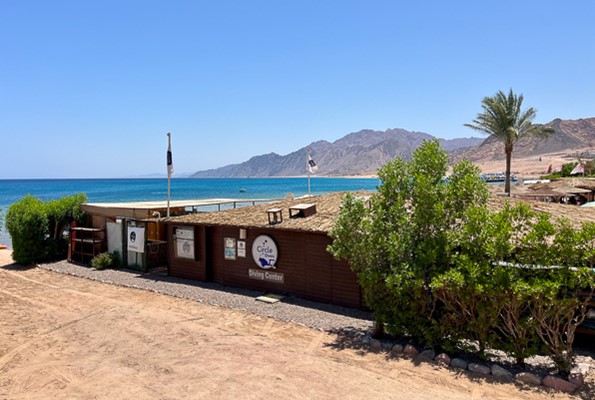House Reef Dahab
Dahab Dive sitesOur house reef is just a few short steps from the dive centre, as you enter the water you will see a buoyed off swimming area – this whole area is approx. 1.5 -2 metres deep so the perfect place to don your fins ready for your dive.
Descend underwater passing under the marker buoys and start the dive to the right side if you are in the middle of the swimming area you will straight away see a small bommie with a clown fish on it affectionately named “Nemo House” by the instructors, stop and look around you will notice there is often a stone fish camouflaged in the middle and small hermit crabs crawling around in their shells getting on with daily life.
If you want to test your buoyancy, then just a few metres away in approx. 5-6 metres of water is the start of the buoyancy park with hoops to swim through – don’t touch them though as you will have to try again.
Zig zag your way to 12 metres stopping at all the little bommies along the way, each one holds its own secret be it pipe fish, octopus, crabs, clown fish, white peppered moray eels and lots of tube worms in variety of colours. In the small hard corals there are some beautifully coloured Christmas tree worms. Start turning the dive to the left side the floor along your path is covered with good healthy seagrass.
Don’t dismiss the seagrass as it hides many creatures, if you are lucky you may find a seahorse on your way. Be careful of your fins though as seagrass is vital to keep the earth healthy, it produces oxygen, cleans our coastal waters, absorbs greenhouse gas emissions, and helps to keep our ocean healthy which stabilises the climate —both global and local.
On the left side of the dive site in 4-5 metres of water, you will come across an artificial reef with some artistic sculptures made from old junk and bottles, a small fairground ride elephant, some sharks lying on the seabed and most impressive is the hammerhead shark.
This “underwater museum” has attracted many species of fish including glassfish which in turn has brought lionfish awaiting their next meal, look around the floor for hiding crocodile fish too, the coral is starting to grow well on the structures so in time more life will follow.
Throughout the dive watch out on the sandy patches for the local feather tailed rays, there are 2 of them that have made the area their home, often you will see sand clouds where they are searching for food.
Be careful on your return to the beach on the left side as the glass bottom boats and speed boats pass overhead to return to their landing spot.
This is a great dive for the beginner and advanced diver. Take it slow and you will find many things to explore.


